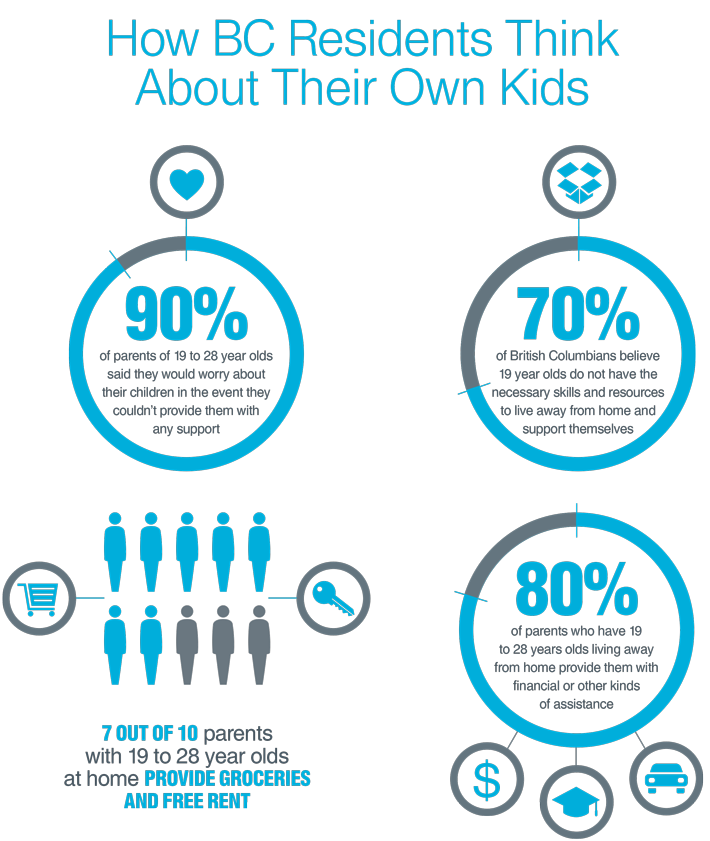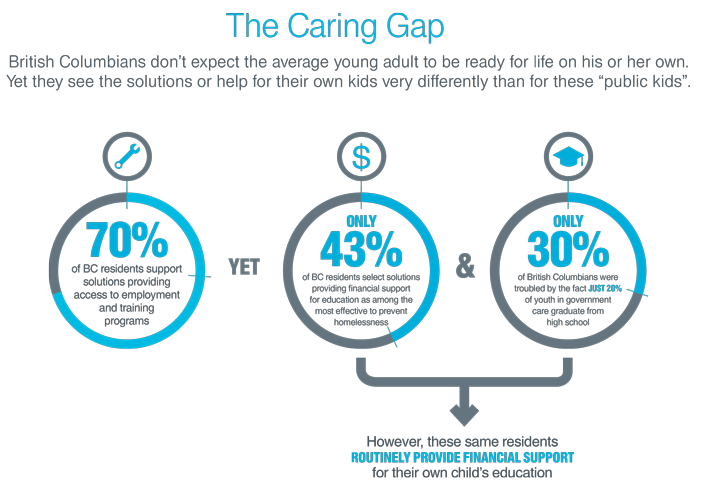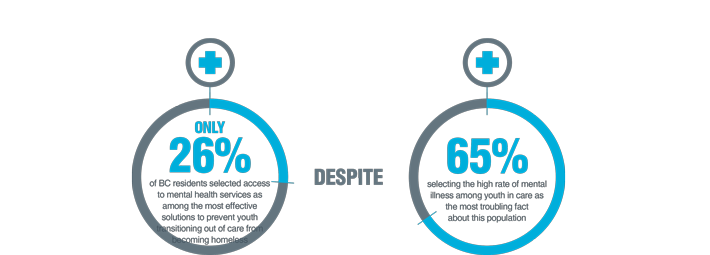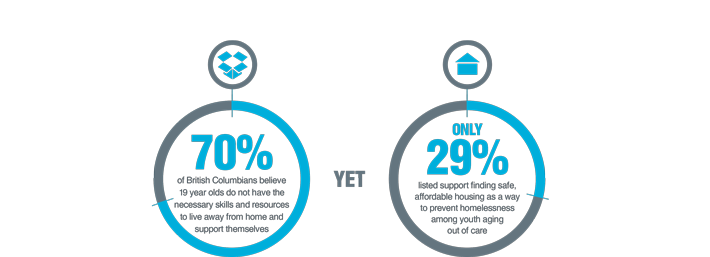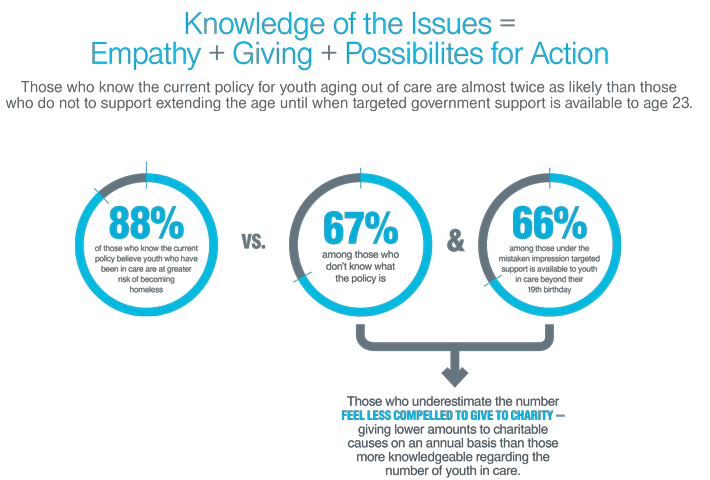Most programs focused on homelessness target the issue from the street level, focusing on improving services and increasing accessibility to supports for existing homeless populations. Often overlooked is the huge impact that prevention-based approaches can have. Such an approach is more likely to have success treating the causes, rather than the symptoms, of homelessness. The series of infographics below, published by the Vancouver Foundation as part of their Fostering Change report, addresses the care gap that exists for youth leaving foster care and youth living in foster homes. The organization believes that “the best way to reduce homelessness is to prevent it from happening in the first place”.
90% of parents of 19-28 year olds surveyed said that they should worry about their children in the event that they couldn’t provide them with any support. 70% of British Columbians believe that 19 year olds do not have the necessary skills and resources to live away from home and support themselves. Yet, for youth in foster care who turn 19 and are no longer supported by the government, there is an expectation that these youth do not need any further support. This indicates that parents have markedly higher standards for “public kids” compared to the standards that they have for their own children. This is despite the fact that children living in foster care and group homes have a high rate of mental illness, lower psychosocial well-being, and poorer academic success (just 20% of youth in government care graduate from highschool).
In order for there to be support for programs focused on at-risk youth in British Columbia, residents need to be aware of the scope of the challenges that these youth face. However, findings from the Vancouver Foundation Transitions Survey show that the vast majority, 71%, of British Columbians underestimate the percentage of youth living in foster care or group home. Only 28% of those surveyed were aware that targeted government support is not generally available to young people after their 19th birthday. This demonstrates a clear need for increased awareness about (1) the number of youth in care, and (2) the need for continued support for these youth.
Knowledge about the issues at hand goes a long way towards increasing support for continued assistance for youth aging out of care. Most British Columbians (67% surveyed) are unaware of what the policy is, and 66% of those surveyed are under the mistaken impression that targeted support is available to youth in care beyond their 19th birthday. Individuals who are educated about the policy, and are more aware about how many youth do not have supports when moving out of care, are more compelled to support expanding existing care. Individuals who are more educated about the policy are also more likely contribute to charitable causes targeted at providing programs for youth in care.
Our expectations for youth in care should not be any different from the expectations we have for other youth. Accordingly, we need to be doing a lot more for youth who are transitioning out of care and provide them with continued support. One of the biggest barriers to bridging the care gap that exists are misconceptions that exist about the breadth of the support and services available to these youth. Spreading awareness about how programs need to expand and provide continued support to youth in care is a step in the right direction. If there is a common consensus amongst Canadians that youth transitioning out of foster care and group homes urgently need more support and care, policy and practice will come to reflect this change.
View the PDF version of the Vancouver Foundation infographic here.


